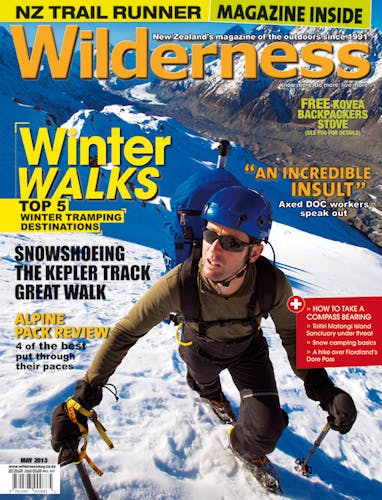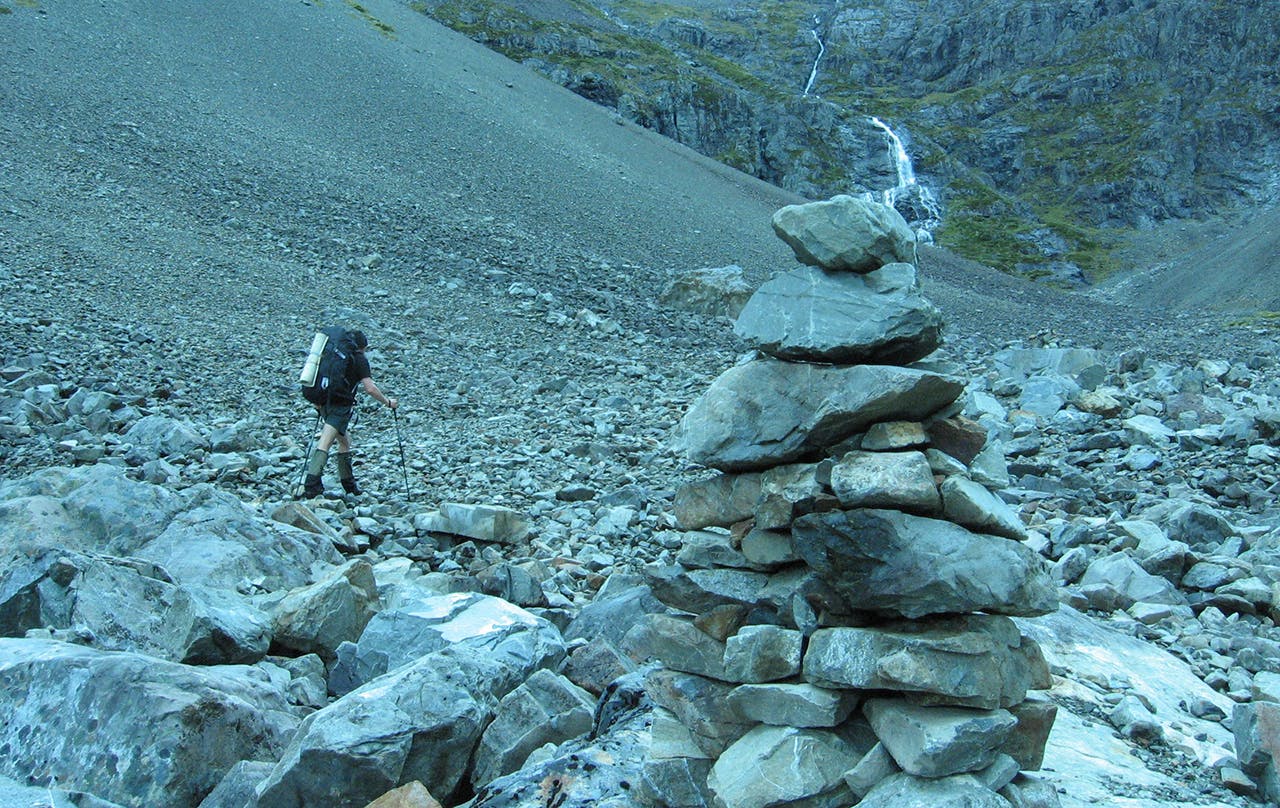Donning boots and packs is a primal urge
I feel there is something innate in the appeal of walking along a track. Does knowing the best way through the land speak to some deep primal urge?
It is, after all, how the world was peopled. American journalist and biologist Paul Salopek is spending the next seven years walking from Ethiopia to Tierra del Fuego, retracing the journey of early humans out of Africa and around the world that he calls ‘the long walk into our becoming’. Hunter-gatherer men are thought to have walked around 16km a day and women 9km. Many western humans are lucky to do that in a week. For the vast span of human history, we averaged 5200km a year. That’s close to walking the 3054km Te Araroa Trail twice.
Roads are Johnny-come-latelies in the track network that arose to service the wheel and the transport of farmed produce. Animal paths have been around for millions of years. Who hasn’t followed a deer trail at some point on their tramps? A track is just the absence of obstructions. And it is easy to see how they form. When you are off track you find a way around big boulders, choose the least dense undergrowth, and if enough people follow you, or if you walk that way often, a track is born.
Walking along a trail can be one of the most natural and pleasurable of experiences, but not always. The etymology of the word travel comes from travail and the notion of a trip as something enjoyable is a relatively recent one. In our early history, journeys were born of necessity – hunting, gathering, raiding, fleeing. As we became more sedentary and technology improved, the reason for journeying changed: visiting relatives, trading, pilgrimage. Danger has always been a component of a journey: bandits lurked and for a predator a track really is manna from heaven. Mountain passes were feared not just for the terrain and weather – they make perfect ambush sites. A stone arrowhead has been found lodged in the shoulder of Ötzi the Iceman who was possibly ambushed some 5300 years ago.
While ambush is no longer a major concern of most journeys, my mind certainly churns while I walk. It turns out there is a scientific basis for ambulation-generating thought. “You can make a pretty good evolutionary argument that this was how we were designed to absorb information,” Salopek says. We have evolved to comprehend our environment at 5km/h – walking speed.
The brain develops and responds to the world through perception and action. Increased blood circulation means more oxygen and glucose reach the brain. And as a less intense exercise than, say running, leg muscles don’t compete to the same degree for this oxygen and glucose. Walking does help you think – in fact it has even been shown to slow cognitive decline in the elderly.
Aristotle walked while he thought, earning his school of philosophy the name ‘peripatetic’. Hippocrates felt that “walking is a man’s best medicine” and Nietzsche went further by saying “all truly great thoughts are conceived by walking”. It’s all neatly summed up in the Latin phrase ‘solvitur ambulando’ – it is solved by walking – attributed to Diogenes the Cynic.
On his seven-year trek, Salopek is in for some serious thinking time.
Perhaps walking through the land is an ultimate rejection of our sedentary lives and offers a brief return to the peregrinating ways of our forebears. In the past, your life depended on your skill of walking on two legs through the landscape. When you go tramping, it still does.
– Carl Walrond is a Wellington-based writer








